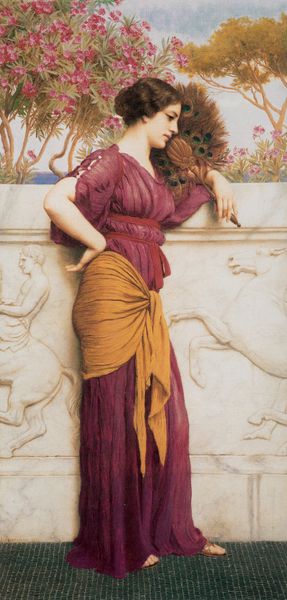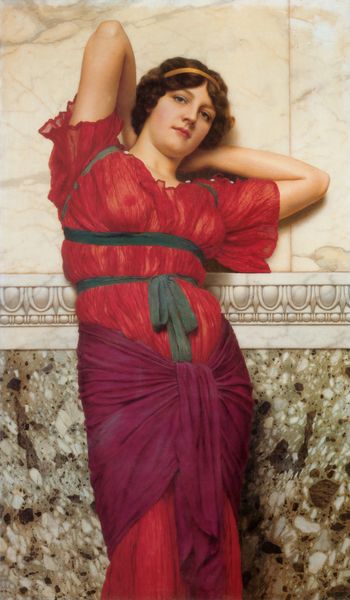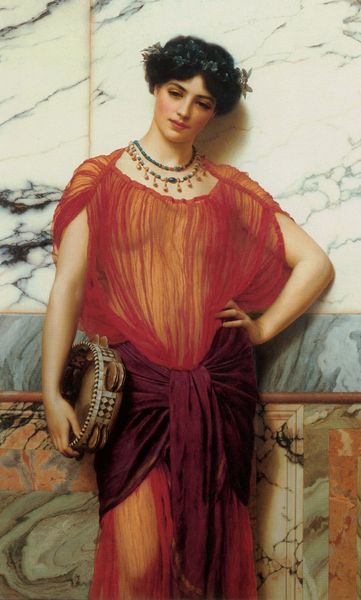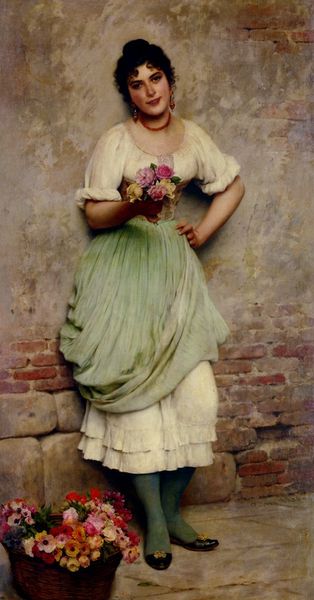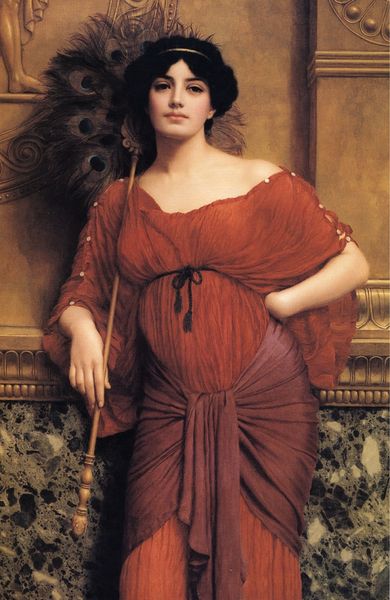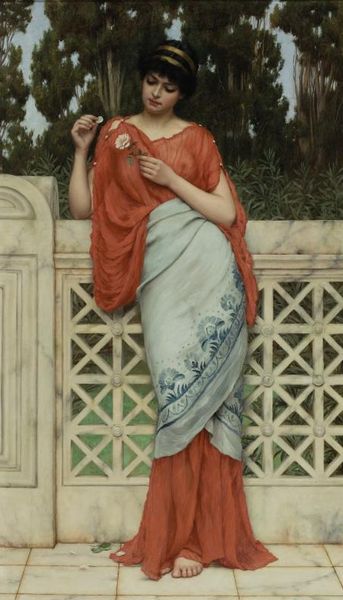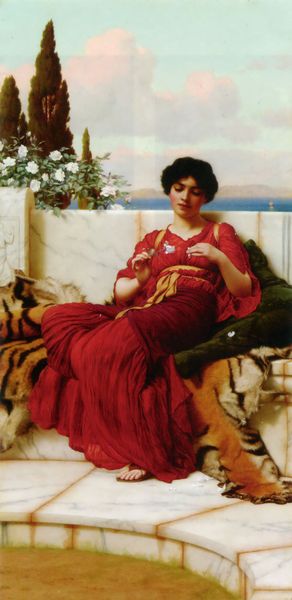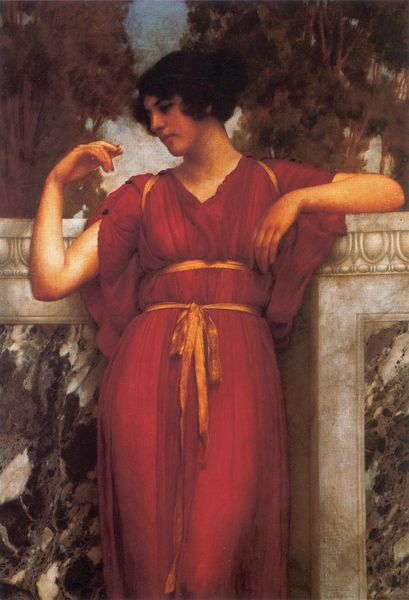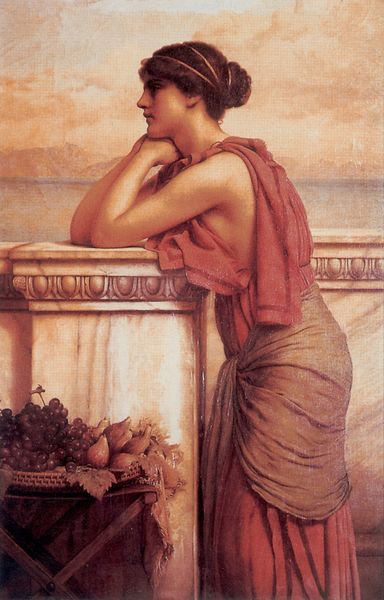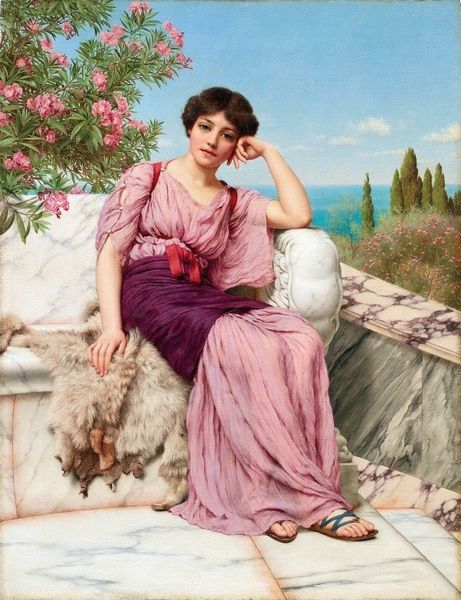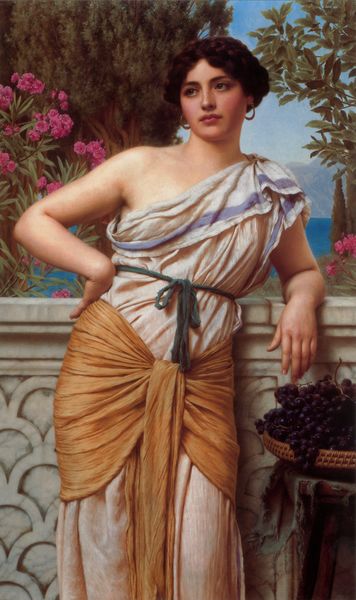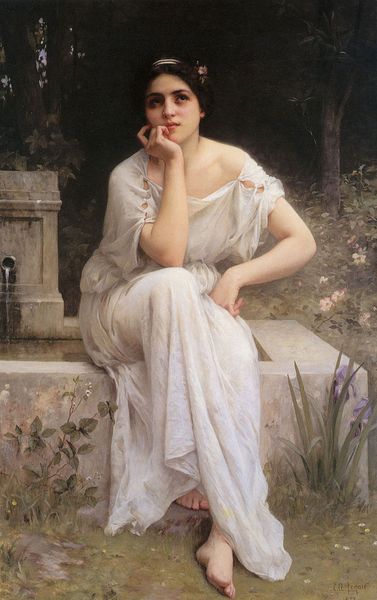
Dimensions: 77.5 x 38.7 cm
Copyright: Public domain
Curator: This is John William Godward's "An Offering to Venus," created in 1912. Godward, known for his idealized depictions of women in classical settings, was a key figure in the late Victorian classical revival. Editor: My initial impression is one of careful composition. The pervasive red is incredibly striking, creating a feeling that balances solemnity with a vibrant pulse, further reinforced by the textures of the gown against the cool stone backdrop. Curator: Yes, Godward excelled at depicting textures. Notice the way he renders the semi-transparent fabric of her dress. This ability to convey luxury was highly prized in his time and a product of the socio-economic landscape where wealthy patrons craved idealized representations of beauty and leisure. Editor: Absolutely. It seems significant how the materiality also extends to the background, too. The way the marble patterns were achieved tells a story of labor and craftsmanship valued by Godward's elite clientele, underscoring their social standing. Curator: Precisely. Moreover, consider the context. Godward was working during a period of intense artistic change; he explicitly rejected modernism in favor of this romanticized vision of the past. His adherence to classicism, though technically brilliant, placed him at odds with the avant-garde and, ultimately, contributed to his tragic decline. Editor: It’s an interesting contrast—this beautiful scene arises from tangible resources shaped by human labor, yet aims to transcend into this perfect, timeless image. Even the placement of the flowers indicates purpose. We get this juxtaposition between material processes and idealized representation. Curator: Indeed. The bouquet, presented as an offering, implies a dialogue between the human and divine, further embedding the painting within a cultural narrative steeped in mythological symbolism that was very much constructed. The artist deliberately selected themes appealing to prevailing notions of beauty and virtue. Editor: Seeing the painting with a focus on process shifts my perception. While appearing refined, this is fundamentally an oil painting – built up from layers. Looking closely at the vase she’s handling reveals deliberate marks, each contributing to its delicate look. It highlights the intense work that went into what might seem effortless or simply "pretty". Curator: Understanding the art world of Godward’s era provides invaluable context, but your insights to his labour-intensive approach highlights so vividly a reality so distant from the ethereal aesthetic the artwork wants to express. Editor: Reflecting on the painting, what strikes me most is how material considerations and Godward’s commitment to process and craftsmanship significantly shapes the artwork's perceived 'timeless' beauty. Curator: And I'm left contemplating how historical context reveals not just artistic choices but the social and cultural values embedded within seemingly timeless depictions of beauty.
Comments
No comments
Be the first to comment and join the conversation on the ultimate creative platform.
